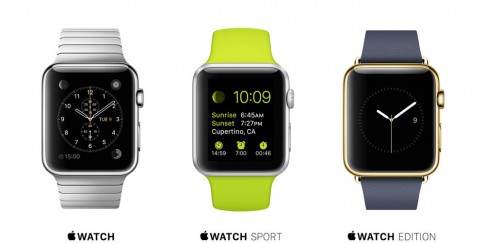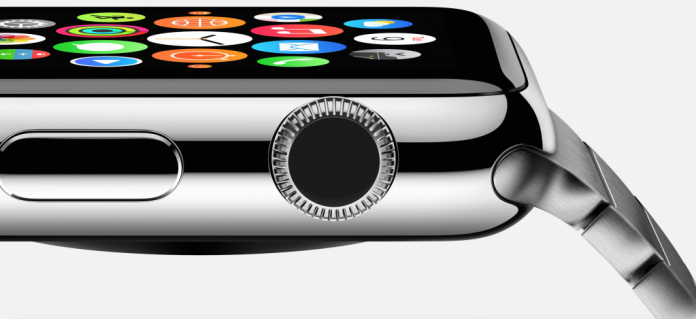Imagine the following scenario:
You’re sitting in Math class, filling out a worksheet, when you get a text. Instead of waiting or trying to look at your phone while keeping it hidden under your desk, you simply glance at your wrist. A notification has popped up on your watch, informing you that your friend has your iPad that you left in Spanish class last period. You breathe a sigh of relief, swipe away the notification, and continue on with your worksheet. Now, this may sound like science fiction, but “smartwatches,” as they are commonly called, are not just some Dick Tracy fantasy. They have, in fact, been easily available since 2013 and, for Apple users, a dedicated Apple model has been available since April: the Apple Watch.

The Watch comes in three models: the plastic-strapped Sport ($349-399), the silver Watch ($549-1,099), and the Edition ($10,000-$17,000), and two sizes, 38 and 42 mm. For two Apple Watch owners, Kyle Leonard ’17 and Kyle Henry ’17, the prices of the watches were the deciding factors in choosing which model to purchase. In Leonard’s opinion, the Edition was “[way] too expensive.” Henry agreed, but he chose to purchase the Watch instead of the Sport because of the extra band options. Some styles “look better with the stainless steel,” says Henry about the Watch’s stainless steel strap. Both boys also agreed that bigger was better, Henry remarking, “42…it’s bigger, and it wasn’t too big on my wrist.”
As for the interface of the watch itself, it took the boys a while to adjust to. Leonard remembers that it “it took me awhile to get used to it, but after 2 days, it’s simple and natural.” Henry said that learning to use the watch is similar to getting a new phone: “you have to figure it out,” also commenting that the Apple Watch is “a little heavier” than most normal watches. However, the OS is “pretty easy” to use according to Henry; the watch excels at its basic functions, although performing advanced tasks like looking at pictures is rather difficult. “You’d think…that the apps may be too small to click, but that’s not the case. It’s actually pretty easy to hit them,” commented Henry. Additionally, Henry believes that receiving notifications is “very natural because it just buzzes your wrist, or if your phone’s not on mute, it makes a pinging sound.” Both Henry and Leonard agree that they found themselves more often glancing at their watches when they received a notification than simply pulling out their phones. Leonard pointed out that he uses the watch “a lot during school and work,” and that using the watch instead of the phone “saves phone battery!”
Ultimately, Henry believes the watches are “not really a necessity, but just something that you may want to add on to your phone.” Apple Watches, and by extension smart watches, in general, are not requirements, and they will not change your life. But they are useful extensions, and once you start using one, it becomes a fluid part of your daily routine. “I think that [smartwatches] will definitely become a more solidified product” going into the future, says Henry, “but I don’t think people with a normal, nice watch…would switch over, unless you’re a big tech person.” Smartwatches are definitely a niche market and they aren’t for everyone. If you’re wearing a watch like a Rolex purely for style, an Apple Watch may not be for you. But if you’re looking to gain a little more productivity out of your wrist, an Apple Watch may be a worthwhile purchase.






